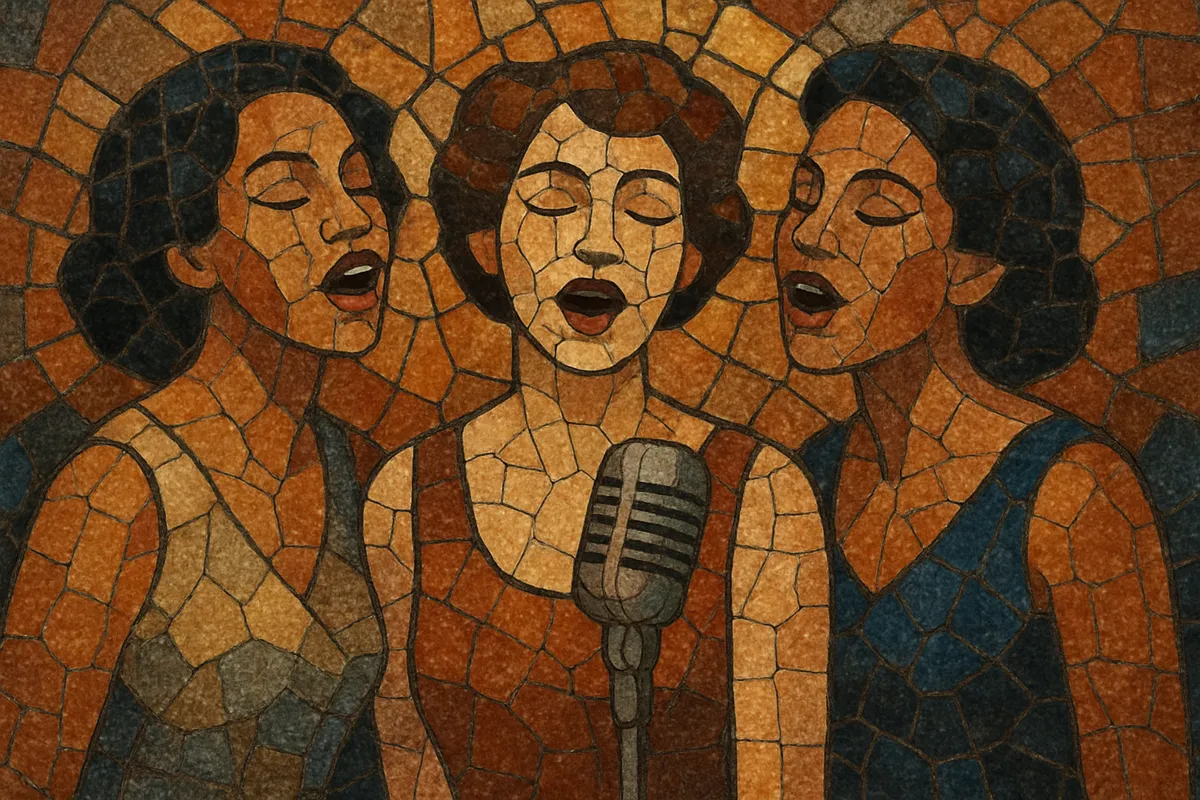
Close harmony is a style of vocal arranging in which the notes of a chord are placed tightly together, typically within the span of a single octave, so that the voices move in a blended, block-like texture.
Often sung by three or four parts, close harmony features parallel or near-parallel motion around a lead line, frequent use of added tones (6ths, 7ths, and 9ths), and smooth voice-leading that minimizes leaps. The result is a warm, unified timbre where no single voice dominates.
The style flourished in early American popular music, jazz vocal groups, and radio-era ensembles, and later became a foundation for modern vocal jazz and pop group arranging.
Close harmony emerged in the United States in the early 20th century as popular song, barbershop practices, and European choral traditions intersected. Early quartets and vaudeville acts experimented with tight voicings to achieve a smooth, radio-friendly blend. As Tin Pan Alley standards supplied rich harmonic material, singers adapted jazz-derived color tones and block voicings to the human voice.
The style reached a mainstream peak during the swing era. Groups such as The Boswell Sisters, The Andrews Sisters, The Mills Brothers, and The Ink Spots popularized close, parallel motion around a lead line, often mirroring big-band sax section sonorities. Radio and film appearances helped codify the sound: dense chords, crisp consonants, and synchronized phrasing over dance-band rhythms.
In the 1950s and 1960s, ensembles like The Four Freshmen and The Hi‑Lo’s advanced harmonic vocabulary with extended chords, altered dominants, and jazz-influenced counterlines. Their work bridged big-band arranging techniques and vocal jazz, influencing later groups and studio pop harmony practices. The tradition continued in both sacred and secular settings, with gospel quartets and college vocal ensembles adopting close voicings.
From the 1970s onward, The Manhattan Transfer, Take 6, and other professional and collegiate groups refined the idiom with contemporary jazz harmony, studio production, and a cappella performance. Close harmony remains fundamental to vocal jazz, doo‑wop lineage, sunshine pop aesthetics, and the arranging playbook of modern pop and choral productions.

